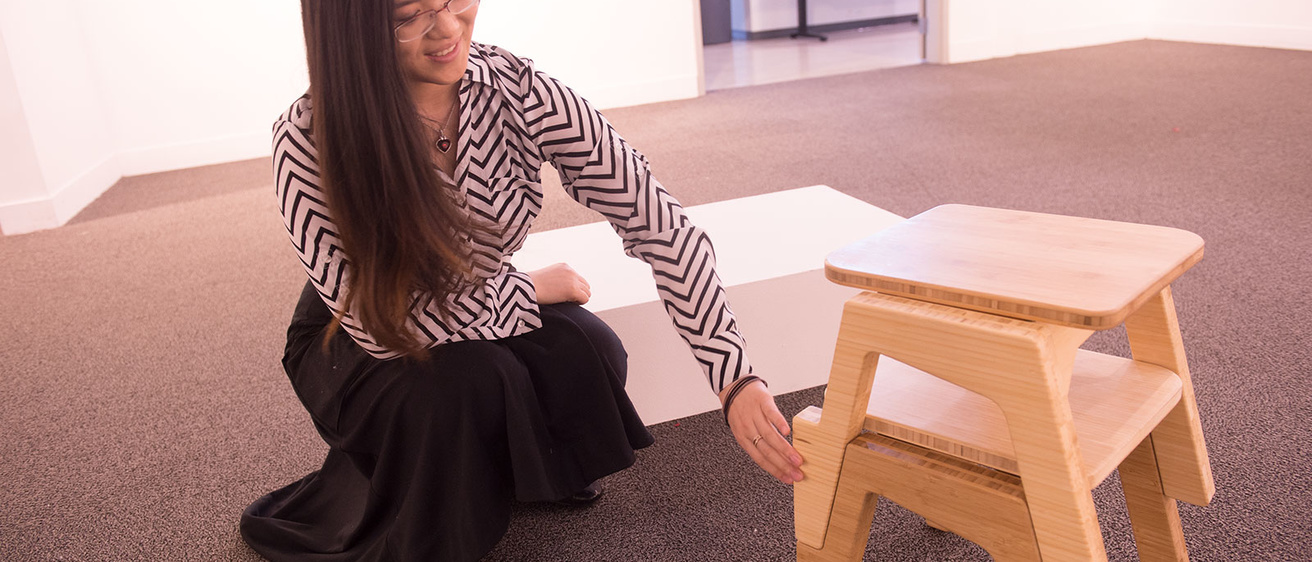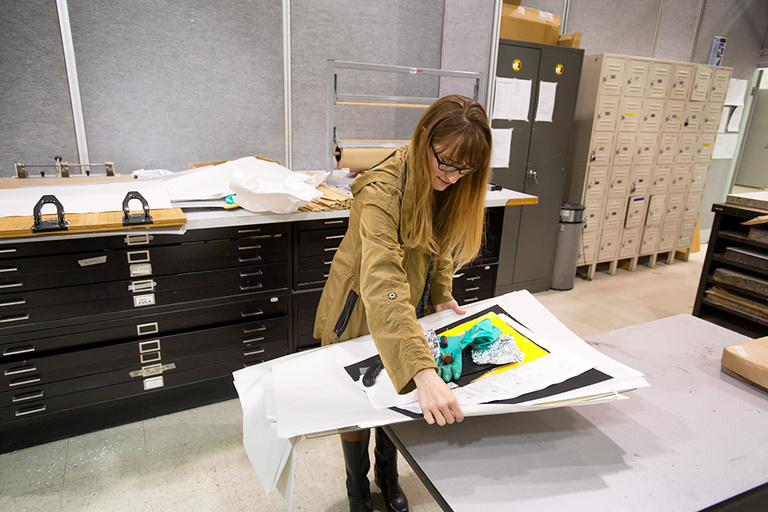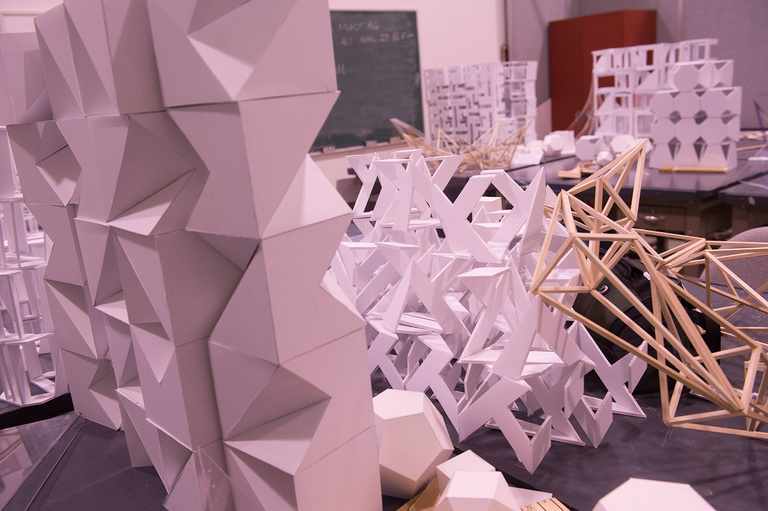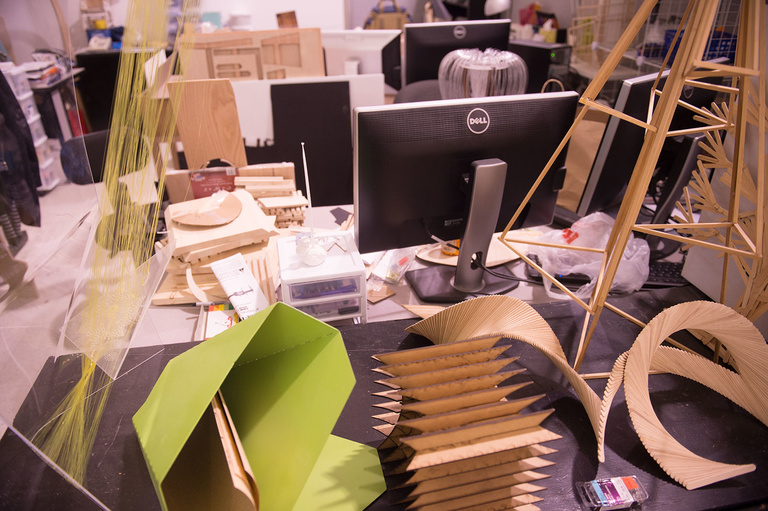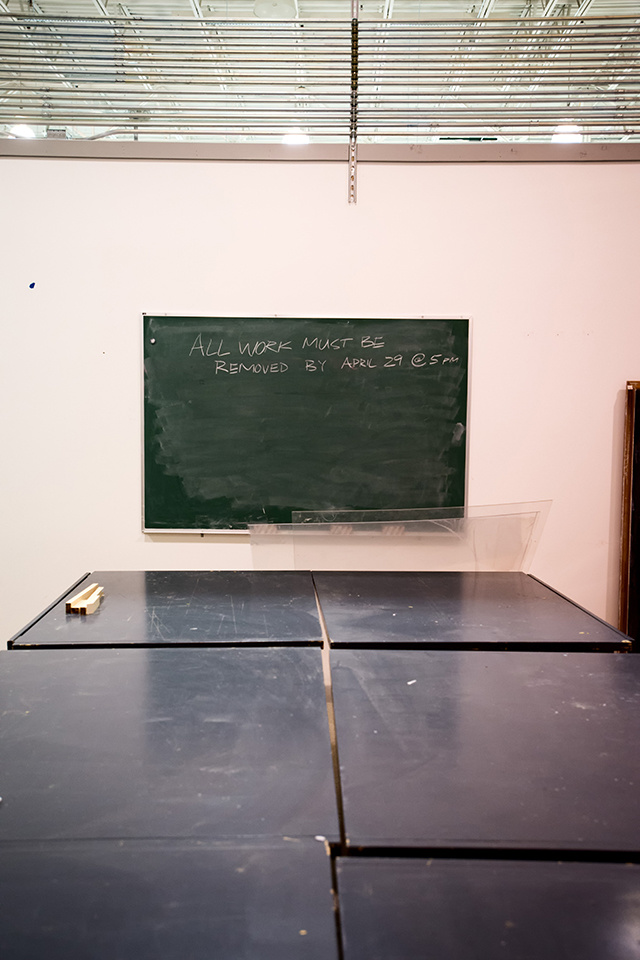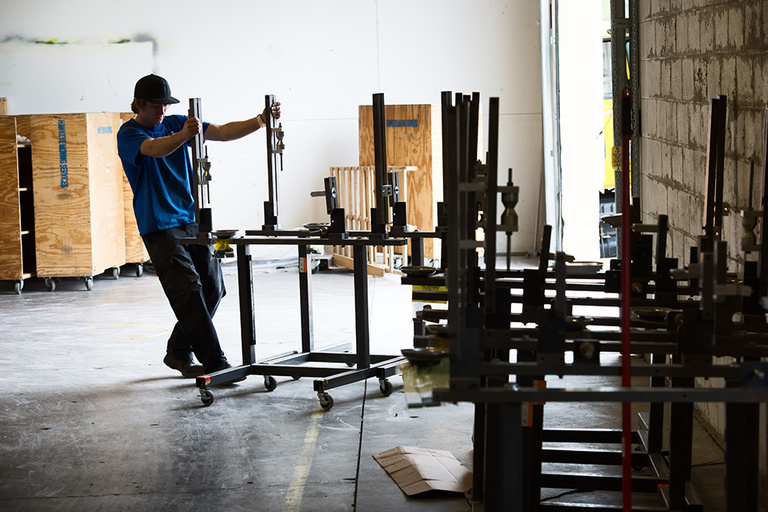Yingjie Chen sits amongst a pile of clutter on, under, and next to her desk, in a cramped space filled with similar piles of clutter.
“So sorry for the mess,” says Chen, in a way that suggests she uses the phrase often. But the second year MFA student studying creative design in the University of Iowa Department of Art and Art History won’t have to apologize much longer. The department started moving this week its Studio Arts division housed in a temporary space on Highway 1—Chen’s workspace included—to its new home in the soon-to-open Visual Arts Building on Riverside Drive. It marks the first time since the flood of 2008 forced the relocation that Studio Arts will be back on the main campus.
“I’m so excited about the move,” she says. “I’ve heard it's high-end all the way, and I can’t wait to see it.”
The move to the new building also begins the final stage of the university’s return to pre-flood normalcy—the last academic departments that lost their facilities to the Iowa River will move into their new permanent homes in the coming months. The departments that will be moving are jewelry and metals, ceramics, sculpture, print making, 3-D design, intermedia, as well as some painting and some photography.
For the art department, the building on Highway 1 has been home since the flood damaged both of its campus buildings. One—Art Building West—was repaired and hosting classes again in 2012. But the department’s other building, which sat on the banks of the river, was damaged beyond use, forcing the move. The new Visual Arts Building, across the street from Art Building West at the corner of Riverside Drive and River Street, replaces it.
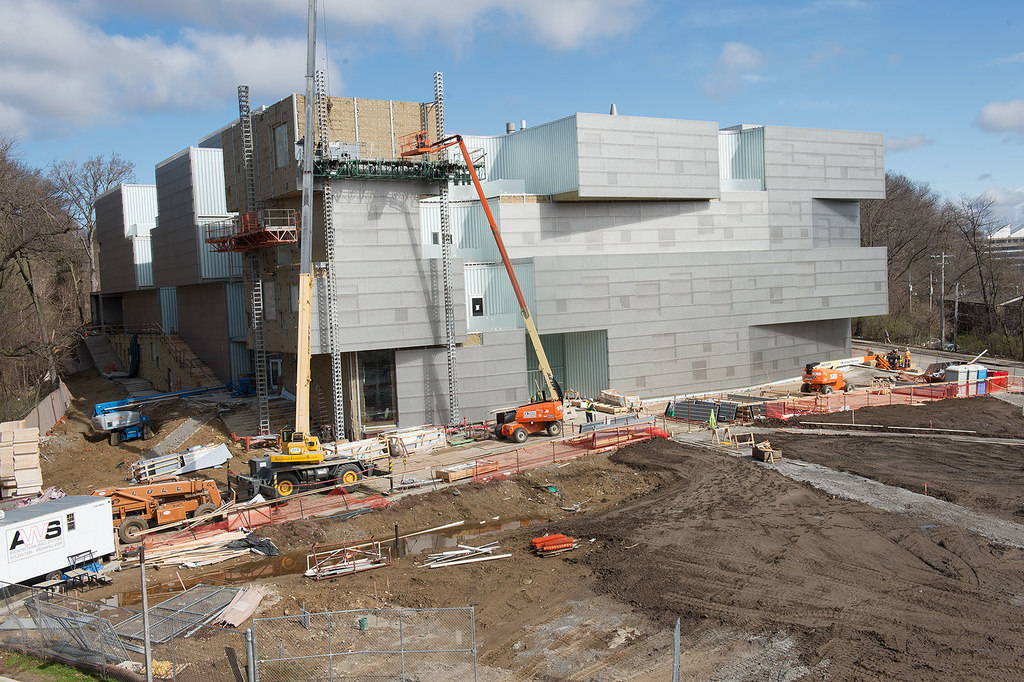
The temporary building on Highway 1 used to be a Menards home improvement store and was empty in 2008, after the company opened a new store a year earlier. The move originally was supposed to be short-term, but when it became clear the original Art Building had to be replaced, a few months turned into eight years.
Steve McGuire, professor of art and coordinator of the department’s studio division, says the Menards building has been functional but far from optimal. The lighting is terrible, he says, they’ve been relying on fluorescents and have almost no natural sunlight. And though lighting is not all that important when shopping for lumber or washing machines, for an artist, it’s everything. Privacy and quiet also were hard to find because of the cramped spaces and because few rooms had ceilings installed, so noise from one room often drifted over the walls and disturbed students working in another.
“When students walk into the new building, they’ll be inspired to produce. It’s one of the most advanced, cutting-edge art-education buildings at any university, and we look forward to showing it to the community and seeing what our students create there.”
—Steve McGuire
The building is a ten-minute Cambus ride away from the department’s administrative offices and library in Art Building West, splitting the Art and Art History Department in two and making it difficult for non-art majors to take electives. The infrastructure also was inadequate for all of the data and technology that’s needed to teach and create art, one of the most significant changes in the art world during the eight-year sojourn.
“People don’t realize how industrial art has become and how much science and engineering knowledge goes into being an artist today,” says McGuire, pointing to advancements in computer-aided design, 3-D printing, computer-operated lathes, and plasma cutting.
But most of all, the building’s 72,000 square feet are not enough for all the classrooms, studios, galleries, and gathering spots for effective teaching, research, and creativity, leading to the piles of clutter on and around Chen’s desk.
The students who study there have a certain fondness for the building, though. It’s all they know, they say, so the building’s weaknesses were something they could adapt to. For Chen, the place was a palace compared to the school in her native China where she did her undergraduate work.
“We have a foundry here, and a wood shop, and fine computers,” she says. “I didn’t have any any of those things in China.”
Robby Scott, a second-year MFA student studying painting, says the funkiness of the Studio Arts building was in some ways inspiring.
“It took a certain kind of student to choose to come to a program with fluorescent lights and fake walls in a big warehouse,” he says.
On top of all that, it has lots of free parking.
But McGuire says the new Visual Arts Building will quickly make people forget about the Menards era. With 126,000 square feet, it’s filled with the latest teaching and production technology, with walls of glass to let through natural light. Designed as it was by renowned architect Steven Holl, it’s a piece of art in itself.
“When students walk into the new building, they’ll be inspired to produce,” says McGuire, whose office has been in the temporary building since 2008. “It’s one of the most advanced, cutting-edge art-education buildings at any university, and we look forward to showing it to the community and seeing what our students create there.”
The move to the new building is expected be complete by May 15, in time to host its first summer session classes the next day.
